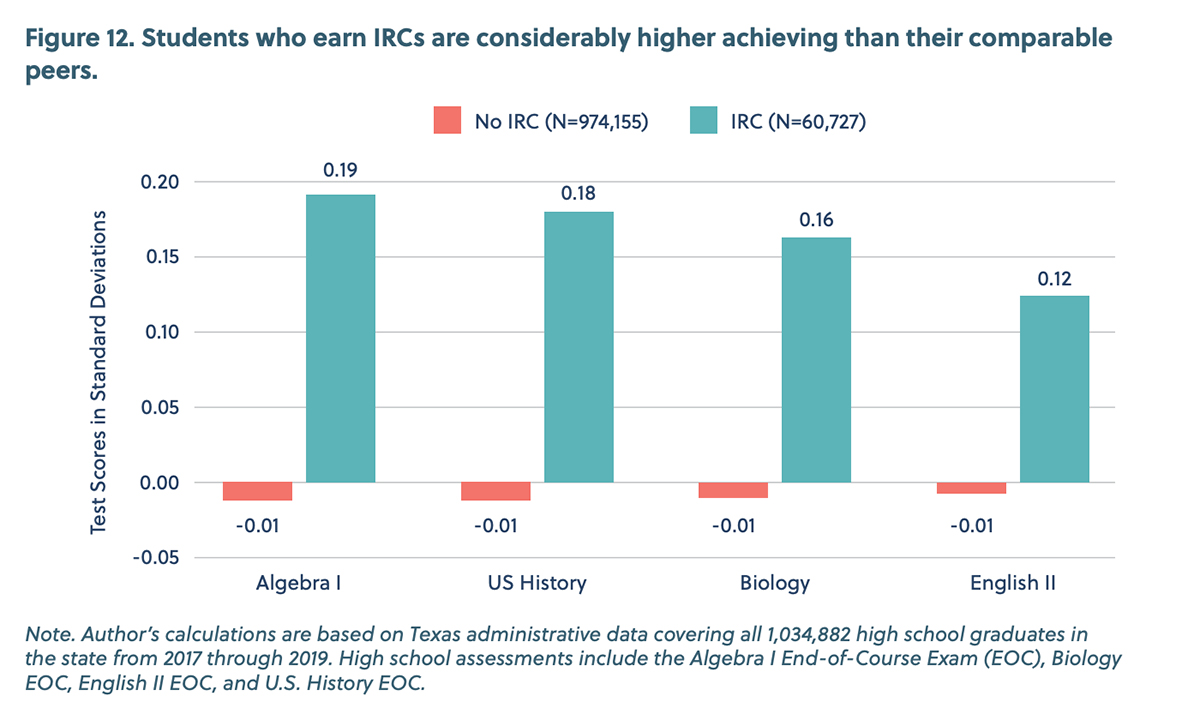How Rethinking Industry-Recognized Credentials Can Help Boost Student Success
Northern: Are high schoolers looking to dip their toe in the water, learn about a field or pursue a career? Credentials hierarchy can help them decide

Get stories like these delivered straight to your inbox. Sign up for The 74 Newsletter
Early in my career, I taught high school in North Carolina. One of the coolest things we did was partner annually with the local Habitat for Humanity team. Each year, students in my school’s construction-trades classes built a modular home from the ground up, doing the masonry, carpentry, electrical work, plumbing — all of it. Fall found them toiling away on the foundation and framing, struggling to get the roof on before winter.
Students back then didn’t have the opportunity to earn an industry-recognized credential in construction or any other field. Today, these certifications, conferred by businesses, industry groups or states, attest to a student’s knowledge and skills in a particular domain. High school students earn credentials most often through career and technical education.
While it’s encouraging that more than half of states now include attainment of these certifications in their school accountability systems, there’s more they could do to help these programs live up to their potential. A recently commissioned study authored by the University of Texas’s Matt Giani and commissioned by the Thomas B. Fordham Institute points out some areas for improvement.
One key problem the study found is that many students who earn industry-recognized credentials don’t end up employed in the industry most closely aligned to them (if they enter the workforce) or major in related fields (if they attend college).
It’s discouraging, and more than a little baffling. Why would students go to the trouble of earning an industry credential that they don’t plan to use, at least not immediately?
Student focus groups provided some surprising answers. It seems that high schoolers value career and technical education in ways that policymakers aren’t recognizing. Some said they took CTE courses solely to explore new interests, not necessarily to attain a credential — but also because they found their other classes dull. This tracks research that shows high schoolers are bored out of their minds — but consider CTE classes more interesting than other courses. One Michigan survey reports that students find CTE particularly attractive, since they get to “spend half of the day away from high school.” An analysis of a popular federal dataset reveals that taking CTE courses in the sciences is linked to increased engagement at school, particularly for low-income students.
On the flip side, some in the focus groups said taking CTE classes helped them decide what they weren’t interested in — like the cosmetology student who enjoyed the program’s collaborative nature but discovered she hated cutting hair.
Still others enrolled in credentialing programs with a practical interest in a field that already appealed to them, or wanted to acquire loosely related workplace or general life skills. A student in the automotive technology program, for instance, planned to become a veterinarian but, hailing from a family of mechanics, didn’t want to pay someone else to fix her car. Another, who planned to go into real estate, thought enrolling in a construction program could help him flip houses on the side. A third, who signed up for culinary arts, simply wanted to learn how to cook.
Given this variety of motivations, schools could use a more flexible system that acknowledges student intent. One sensible solution is to offer exploratory courses, followed by a hierarchy of credentials that differentiates among the type and purpose of each.
Exploratory courses would not count toward a credential, but simply give curious students a taste of what a field is all about and a chance to roll up their sleeves. Starting these courses in middle school would allow older students to maximize their high school years.
Level 1 of the hierarchy would accommodate students who have a practical interest in obtaining an entry-level credential but aren’t necessarily looking to build upon it. This category would include job safety and general work readiness, including basic first aid, word processing and financial literacy, and could encompass certifications from the Occupational Safety and Health Administration, Microsoft and the American Red Cross.
Level 2 would appeal to students who have at least some interest in a specific field and might want to augment it. These certifications would be stackable, meaning that initial skills in, say, computer science, health care and manufacturing could be expanded via subsequent certifications. For instance, relevant certifications in manufacturing technology might begin with electrical maintenance, then progress to industrial electronics, then to mechatronics. Likewise, manufacturing production might begin with certification in basic welding, then welding fabrication, then metal fabrication.
Level 3 would meet the needs of students who’ve decided on an occupation. It would comprise capstone credentials that demonstrate mastery and truly advance careers. In radiology, for instance, that would mean a radiologic science management bachelor’s degree, potentially earned after attaining a limited medical radiologic technologist certificate and a radiologic technology associate degree.This type of hierarchy would better reflect how students think about and approach CTE courses and credentials. It would also help point the way to high-skill, high-wage and in-demand occupations, which often sound good in theory but lack pathways to take students there.
Get stories like these delivered straight to your inbox. Sign up for The 74 Newsletter

;)
